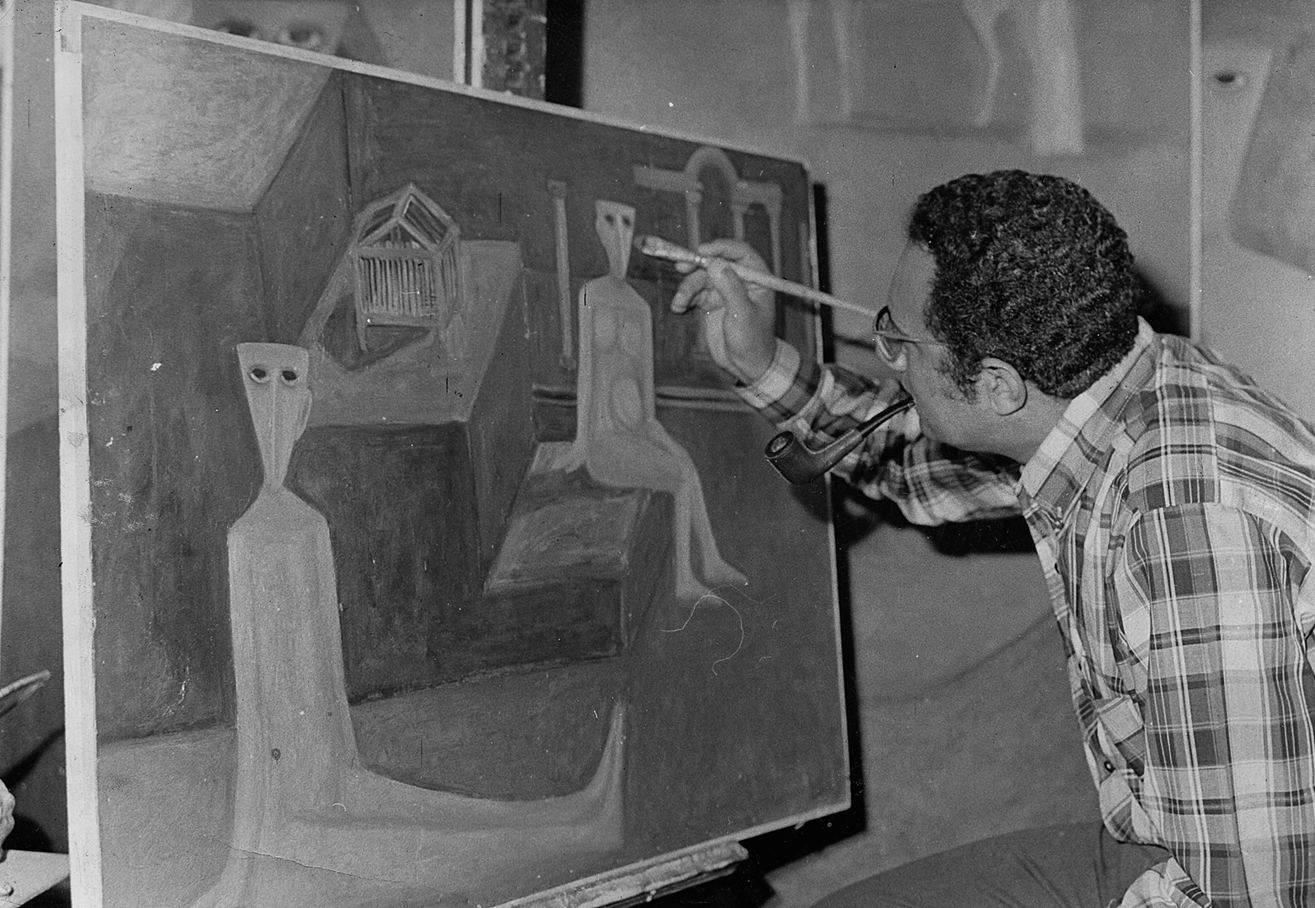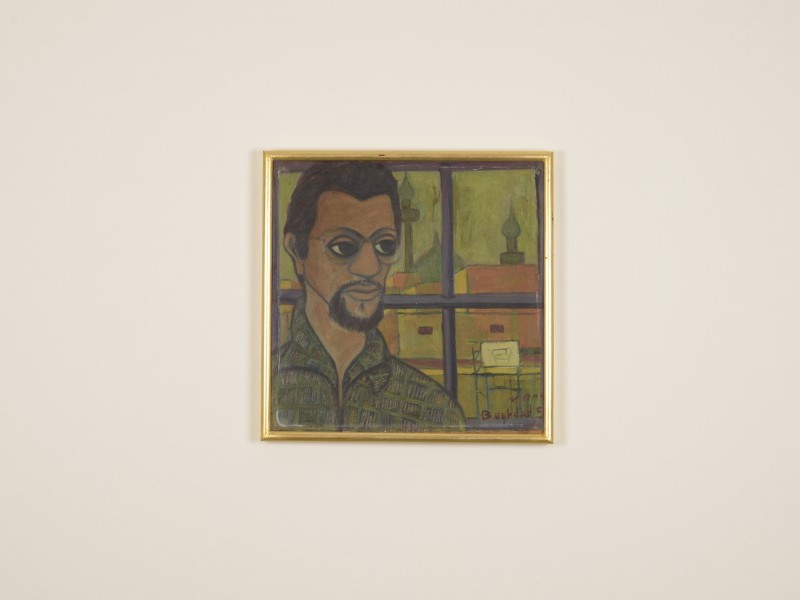

Biography
A prolific artist, poet and critic, Ahmed Morsi has produced a diverse and extensive body of work from the 1940s until today. Although he has resided in New York since 1974, Morsi’s practice and modus operandi, continually connected to his friendships and collaborations with peers in the Arab world, manifest a lifelong love for his hometown of Alexandria. He is considered a foundational member of the ‘Alexandria School’, a term coined by renowned Egyptian novelist and critic Edwar al-Kharrat that defines the generation of free thinkers in 1940s Alexandria who came of age in the multi-ethnic, culturally diverse port city.
Both figurative and fantastical, Morsi’s paintings reflect his interest in surrealism and draw from his multidisciplinary practice, particularly in the literary sphere.
In 1954, Morsi graduated from the University of Alexandria, Faculty of Arts with a major in English Literature. During the years 1952-53, he studied art in the studio of the son of Italian master Antonio Becci, whose former students included Seif Wanly, in Alexandria. Early on, Morsi was initiated into Alexandria’s literary society as well as the city’s very own rising group of artists. By his early 20s, he was participating in group shows with Egypt’s most notable modern artists, including A Al Gazzar, H El Telmisani, I Massouda, F Kamel, H Nada and M Moussa. His last studio in his birth city was at the Alexandria Atelier and he was one of the few handpicked artists selected to exhibit at the opening of the city’s Museum of Fine Arts. Morsi was also writing poetry and developing this talent in parallel with his painting and in 1949, he published his first Diwan, “Songs of the Temples / Steps in Darkness” at the age of 19.
He moved to Baghdad, Iraq in 1955, where he taught English to supplement his two-year stay, but primarily to sever his dependence on his beloved city, Alexandria and its influence on him. This was a time of a cultural renaissance in Iraq, when Baghdad was a centre for the literati, the artists and the intellectuals. It was in Baghdad that he developed a friendship and a working relationship with several Iraqi writers and painters, among them Abdel Wahab Al Bayati, Fuad Al Takarli and Ardash Kakavian; and these relationships continued to produce noteworthy creative cooperation as well as life-long friendships throughout the coming decades. It was also in Baghdad that the artist developed his talent for art criticism and was invited to cover major Baghdadi exhibitions for local papers.
Returning to Egypt, he moved to Cairo in 1957. In these years, Morsi was the first Egyptian to work alongside Egypt’s acclaimed playwrights, Alfred Farag, Abdel Rahman Al Sharkawi, designing stage sets and costumes for The National Theater and the original, Khedieval, Cairo Opera House—art forms that had until then previously been relegated only to Italian designers. He also partnered with Abdel Hadi Al Algazzar and co-designed stage sets for an American play at the Cairo Opera House. Other projects with Al Gazzar included a book of Morsi’s poetry alongside Al Gazzar’s drawings. The book was never published due to Al Gazzar’s untimely passing, however the poetry/drawings live on. In 1968, he co-founded the avant-garde magazine Gallerie '68 with Edwar al-Kharrat, Ibrahim Mansour, Gamil Atteya, Sayed Hegab and others and served as its Editor-in-Chief. This publication immediately became Egypt’s most reputable cultural source as the voice of the new modernism. With these years began the artist’s journey into the new world of criticism in Egypt, publishing critiques on both art and literature, both of which remaining intimate domains. He wrote two items for Grand Larousse Encyclopedia (1975); “Art in Egypt” and “Art in Iraq”. Again the pioneer, Morsi introduced a new creative vehicle to the art public in Egypt with his 1995 show: “The Artist’s Book”. Following his exhibition, a new Biennial, The Artist’s Book, was created in Alexandria, under the auspices of the Bibliotecha Alexandrina.
Though his writings remained prolific, subsequent to 1967, Morsi took a decision to stop writing poetry and only returned in 2001 at the request of his childhood friend Edwar al-Kharrat to write a piece commemorating al-Kharrat’s 75th birthday. Morsi’s poetry could not be contained any longer and subsequent works culminated in the publication of several new Diwans.
In 1974, Morsi moved to New York City, where he continues to paint, write and critique from his Manhattan home. In 1976, like many artists residing in the NYC area, he took up the art of Lithography at The New School and added yet another dimension to his creative tools and in the last 20 years, the artist embraced photography–the last art form to be included in Morsi’s extensive palette.
Born in 1930 in Alexandria, Egypt, he currently lives and works in New York.
Related

Ahmed Morsi: A Dialogic Imagination
On view from 1 March - 3 June, 2017, this major retrospective exhibition traces the artist’s diverse output between the 1940s up to the present day.
